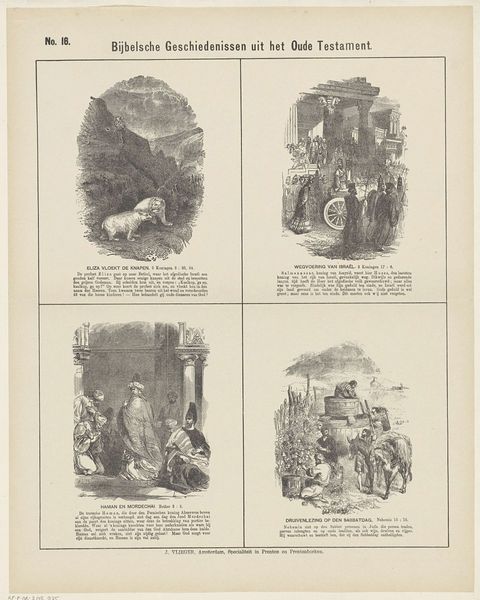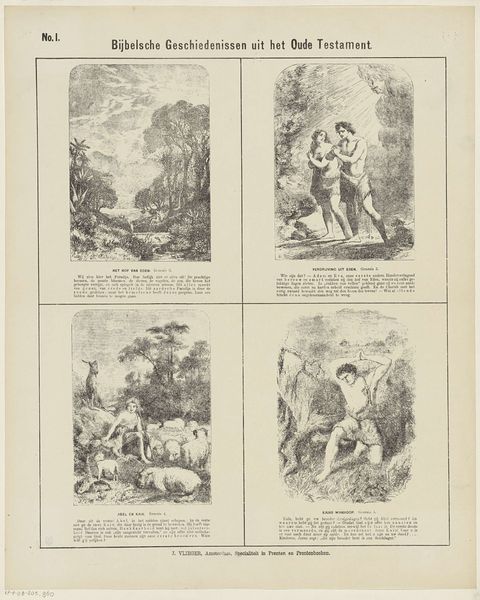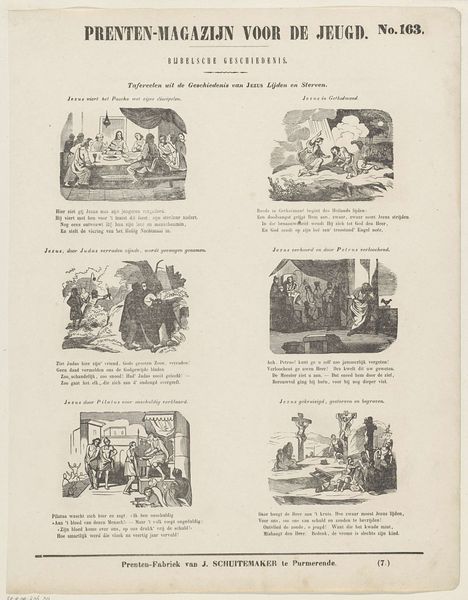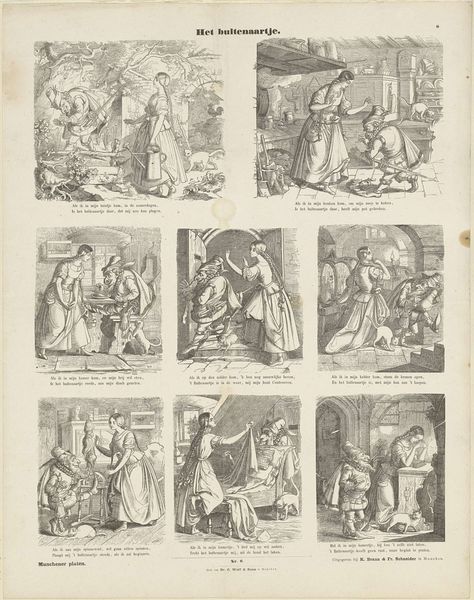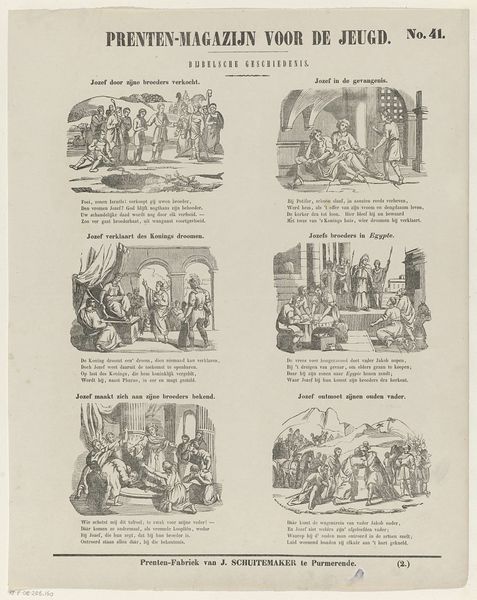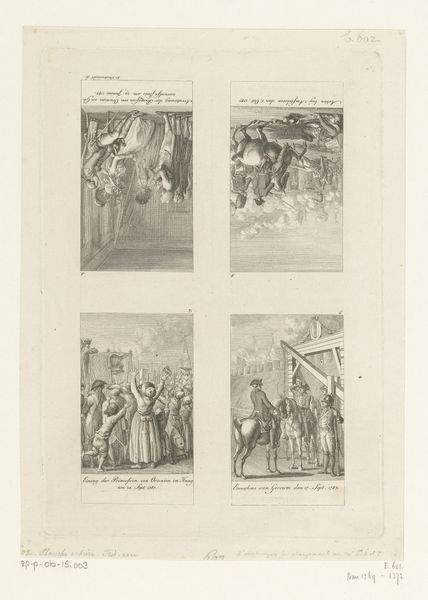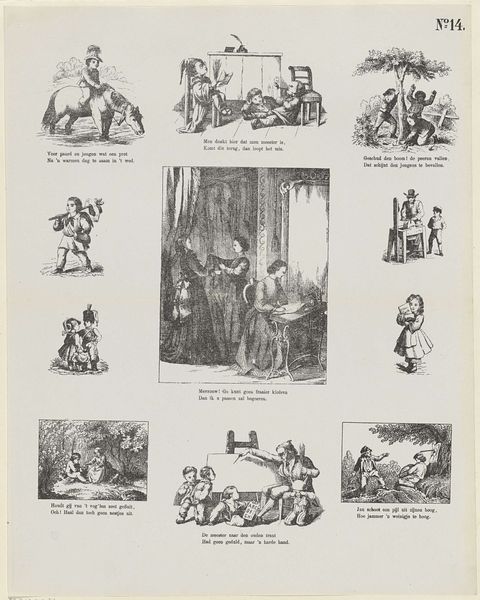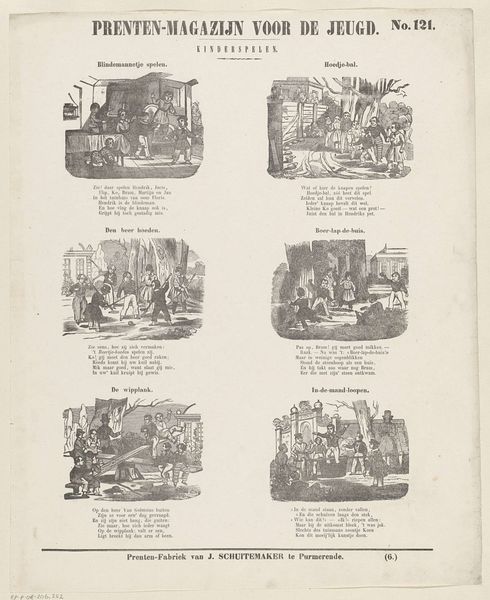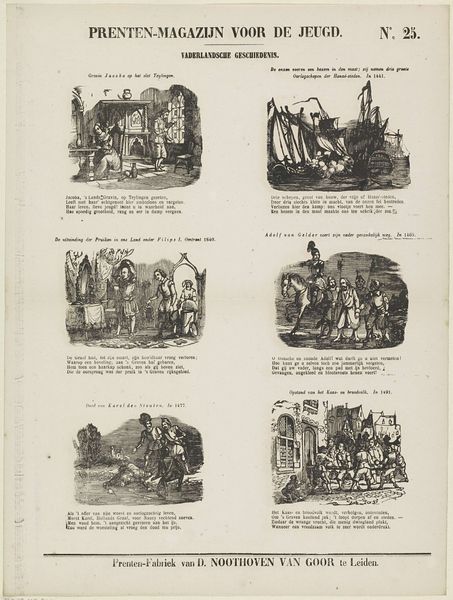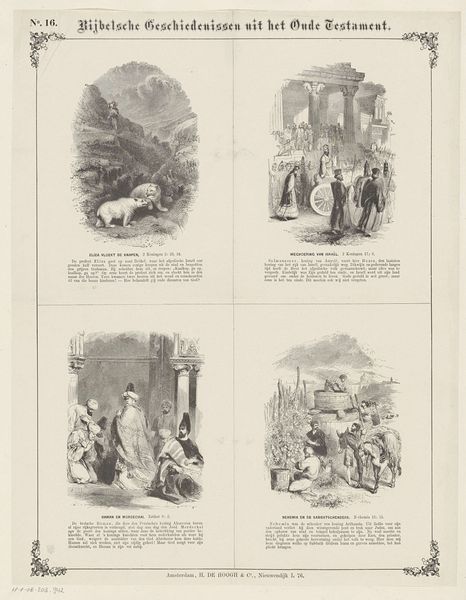
graphic-art, print, engraving
#
graphic-art
#
comic strip sketch
#
aged paper
#
medieval
#
page thumbnail
#
narrative-art
#
animal
# print
#
old engraving style
#
traditional media
#
personal sketchbook
#
sketchwork
#
sketchbook drawing
#
history-painting
#
storyboard and sketchbook work
#
sketchbook art
#
engraving
Dimensions: height 417 mm, width 330 mm
Copyright: Rijks Museum: Open Domain
Curator: This is an interesting piece. We're looking at an engraving entitled "Bijbelsche geschiedenissen uit het Oude Testament" or "Biblical Stories from the Old Testament," dating from 1871 to 1908. It looks like a collection of illustrations, almost like a comic strip, presenting scenes from the Bible. Editor: My immediate reaction is how intensely narrative it feels, but in a rather dark and stark way. The heavy lines of the engraving give it a dramatic, almost tragic mood, don't you think? Each panel seems laden with symbolism waiting to be unpacked. Curator: Absolutely. The graphic art technique lends itself to mass production and consumption of these biblical narratives. You can almost imagine families gathering around, tracing the lines with their fingers, absorbing the stories depicted here. It reflects how religion was packaged and disseminated through readily available printed materials. Editor: Consider, for example, the scene of Moses smashing the tablets. The raw power, the fury depicted, it echoes through time. Those broken tablets—they represent shattered covenant, but also resilience and the potential for renewal after destruction, right? Curator: Yes, and the act of smashing them speaks to human agency. The material artifact, the stone tablet inscribed by God, is physically destroyed by human action. It highlights the tension between divine authority and human interpretation and the potential re-negotiation of power that entails the act of faith. What does that say about those engaging with these prints and their understanding of scripture? Editor: The symbols become more nuanced. The animals, the people raising their hands to the heavens...Each element carries weight, reflecting not just biblical narrative but layers of cultural memory and meaning attached to those stories over centuries. Curator: Indeed, and considering it was created at the cusp of modernity, the act of creating easily-digestible biblical stories for mass distribution can be tied to questions surrounding the rapid transformations underway in European societies. Print shops were industrial workshops after all, producing for both devotion and also profit. Editor: Looking at it now, what strikes me most is how this piece, simple in its graphic style, encapsulates so much of the complex relationship between faith, materiality, and culture. Curator: A fitting insight, I'd say. An excellent look at how engravings made complex narratives tangible for the late 19th century.
Comments
No comments
Be the first to comment and join the conversation on the ultimate creative platform.
